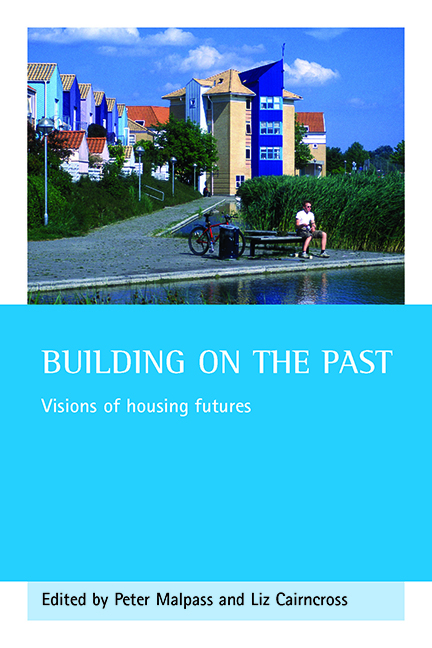Book contents
- Frontmatter
- Dedication
- Contents
- List of tables, figures and photographs
- Foreword
- Acknowledgements
- List of contributors
- one Introduction
- two Moving with the times: changing frameworks for housing research and policy
- three A new vision for UK housing?
- four Housing demand, supply and the geography of inequality
- five Understanding the drivers of housing market change in Britain’s postindustrial cities
- six Affordability comes of age
- seven Mob mentality: the threat to community sustainability from the search for safety
- eight Housing and the ageing population
- nine Tenant futures: the future of tenants in social housing
- ten Democracy and development
- eleven Conclusion
- Index
- Also available from The Policy Press
two - Moving with the times: changing frameworks for housing research and policy
Published online by Cambridge University Press: 15 January 2022
- Frontmatter
- Dedication
- Contents
- List of tables, figures and photographs
- Foreword
- Acknowledgements
- List of contributors
- one Introduction
- two Moving with the times: changing frameworks for housing research and policy
- three A new vision for UK housing?
- four Housing demand, supply and the geography of inequality
- five Understanding the drivers of housing market change in Britain’s postindustrial cities
- six Affordability comes of age
- seven Mob mentality: the threat to community sustainability from the search for safety
- eight Housing and the ageing population
- nine Tenant futures: the future of tenants in social housing
- ten Democracy and development
- eleven Conclusion
- Index
- Also available from The Policy Press
Summary
Introduction
This chapter is concerned with the future direction of change in housing, especially in the UK. On the whole we have not been very good in the past at anticipating changes in housing and the intention is to reflect on changes that have taken place since the 1960s and to assess the implications for future change. The starting point is the evidence from housing research over a period of more than 30 years, the frameworks that have dominated the way research evidence has been organised and presented in the UK and Europe, and changes that mean that we need to reassess these frameworks.
In the postwar period a distinctive approach to housing research emerged in the UK and in Europe as part of the challenge to an overarching thesis about embourgeoisement and the redistributive impact of the postwar welfare state. While sociologists had neglected housing (Hole, 1972), economists and urban geographers were satisfied with filtering or trade-off models that focused on land and housing costs, proximity to the city centre or places of work, incomes and travel-to-work costs (see, for example, Evans, 1973). Many of these approaches derived from a literature that assumed state intervention and subsidy were relatively unimportant for housing. The approaches to housing studies were not unchallenged in the US but the dominant paradigm was felt to work in North America, perhaps because public housing was generally insignificant (and access and continued residence in the sector directly related to income) while the private market could be treated as a seamless whole.
From the late 1950s through the 1960s and 1970s a body of work accumulated in the UK that demonstrated that a different paradigm was needed. For example Titmuss's work on the welfare state (Titmuss, 1962, 1963) identified council subsidies and various payments associated with other tenures as potentially important influences on income distribution. Cullingworth's (1963) work on the private rented sector emphasised the significance of public policy, but also the extent to which that part of the housing market in decline did not conform to one version of rational economic behaviour. Nevitt's (1966) work on housing subsidy added to the account of the significance of state intervention, and both Donnison (1961) and Cullingworth (1965, 1967) began to focus on trends and patterns of residential movement that made most sense when explained through the tenure lens.
- Type
- Chapter
- Information
- Building on the PastVisions of Housing Futures, pp. 15 - 50Publisher: Bristol University PressPrint publication year: 2006
- 1
- Cited by

